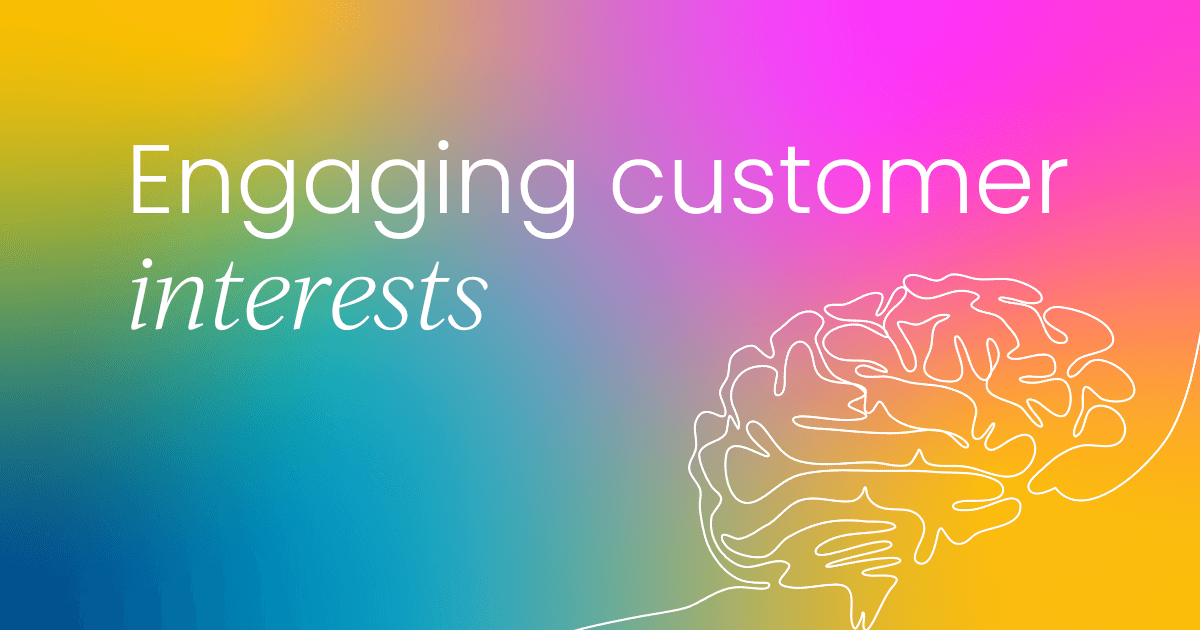As expectations rise and audiences become more diverse, customer marketers are under pressure to create programs that not only deliver value but also feel deeply personal and relevant.
At Jamf, we’ve found that the key to lasting connection is focusing on people first. That means listening more than assuming, building community with intention, and constantly adapting based on what customers actually care about – not just what we think they need.
In this article, I’ll share some of the core principles that have guided our approach, from discovering customer passion points to choosing the right platforms, gathering feedback, and turning insights into real action.
These are the lessons I’ve learned through trial, error, and a whole lot of listening.
Starting with customer value
When people are just beginning in customer marketing or advocacy, it’s common to unintentionally start from the wrong place.
There’s often a rush to focus on KPIs or company goals – what the organization wants to achieve – before truly considering what the customer needs.
But the foundation of any successful program starts with one essential question: How can I provide value to our customer base? That’s the real starting point.
If we’re not thinking about what customers want, what matters to them, and how we can deliver something meaningful, the program won’t attract or retain their attention – and it won’t succeed.
It’s also critical not to make assumptions. Get to know your customers deeply and intentionally. Use a mix of methods to understand who they are, what motivates them, and what challenges they face.
From there, you can build programs that resonate and deliver lasting value. That’s what creates the foundation for long-term success.
Choosing the right format for engagement
Over the years, I’ve written all kinds of content – everything from obituaries and personal profiles to ebooks and newsletters. What I’ve learned is that there’s no single format that works for everyone.
People have different personalities and preferences. Some love a deep dive in a weekly newsletter, others prefer the ease and flow of a podcast, while others just want bite-sized updates on social media.
Because of that, content strategy can’t be one-size-fits-all. An ebook might be perfect for one segment of your audience, while another would completely ignore it in favor of a quick blog post.
It all comes back to knowing your audience and accepting that you’re not working with a static product, you’re working with people. Real humans, with changing needs and shifting interests.
That’s one of the biggest challenges in community management. Unlike a product you can iterate on and control, people evolve, and so must the way we engage with them.
It takes experimentation, attention, and adaptability to meet them where they are and continue delivering value as those needs evolve.
Gathering feedback that matters
When it comes to getting feedback from customers, we tend to overthink it. We go straight to brainstorming some elaborate or creative tactic, when really, the best way to get feedback is simple: just ask.
The key is to ask in multiple formats. Some people are happy to complete a longer survey if there’s a strong enough incentive, like a gift card. Others will only engage if it’s short and targeted – if you ask about the one or two things they really care about.
Offering a way to provide bite-sized feedback often results in more thoughtful, higher-quality insights.
It also matters where and how you’re asking. Surveys can be useful, but they require time and often rely on writing skills that not everyone feels confident in. On the other hand, inviting people to a 30-minute roundtable can yield far richer feedback than a dozen written responses ever could.
And once you’ve gathered feedback, don’t stop there. One of the biggest frustrations I’ve heard from customers is when they take the time to share their thoughts, but never hear back about what was done with them.
We need to explain why we’re asking, how their input is being used, and what actions it led to. That kind of transparency turns feedback into a real relationship – and reinforces trust in the process.
Discovering customer passions through human connection
One of my favorite parts of community building and customer advocacy is uncovering what people are truly passionate about. Understanding what motivates someone is key to bringing them value, and that starts with recognizing the human behind the customer.
Passion points aren’t discovered through complex processes. It’s actually very simple: we listen.
Think about the way you interact with your friends – whether you're catching up over dinner or chatting at a get-together. You share stories, ask questions, and learn about each other. The same should be true in our communities. We need to create more opportunities for genuine conversation.
That might mean virtual or in-person meetups, social media challenges, or simply leaving room for open communication. The format doesn’t matter as much as the intention: making space for real people to share what matters to them.
Even small cues can be powerful. I’ve often said I dislike Zoom backgrounds – not because they look bad, but because they erase one of the richest sources of insight. When you can see someone’s environment, you learn about them.
Maybe there’s a Baby Yoda on the shelf, a wall of guitars, or a piano in the corner. These little details open doors to deeper conversations and stronger relationships. They spark connections – not just between us and the customer, but between customers themselves.
Too often, we skip ahead to business outcomes: ROI, metrics, end goals. But if we don’t take the time to understand people first, we won’t build the trust and connection needed for a program to thrive. The foundation of strong community and advocacy programs is always human.
Letting customers guide your channel strategy
Choosing the right social media platform for a community isn't about guessing where people might want to engage – it’s about understanding who they are on a deeper level. That means going beyond roles and titles.
While personas have their place in marketing, they can only take you so far. Real connection comes from knowing the individual people behind those labels.
What kind of life do they lead? How many kids do they have? What kind of work do they do, and where did they come from? These personal details help paint a clearer picture of where and how someone might prefer to engage.
When we were reworking parts of our community last year, I spent time meeting one-on-one with members. I asked a simple question: What social media platforms do you use in your personal life and why? The answers gave me direct insight into where people were already active and what types of experiences they valued.
Instead of assuming our customers would gravitate toward a certain space, we let them tell us. That’s the key. Too often, community managers pick a platform based on what we think will work. But if we just ask, listen, and observe, our audience will show us where they want to be. It’s a much stronger starting point for building meaningful engagement.
Turning engagement into action
When it comes to translating customer passions and preferred engagement styles into meaningful internal changes, it doesn’t have to be complicated.
The formula is simple: build, watch, and iterate.
Build something based on what you’ve learned about your community. Watch how it performs – who engages, who doesn’t, and why. Then iterate. Adjust your strategy over time, because you're working with people, not static data points.
Paying close attention to what resonates and what falls flat allows you to evolve your processes in a way that truly serves your customers.
Contributing to the future of customer marketing
I’m incredibly excited to be involved in programs like the Customer Marketing Fellowship, because they create space for learning, sharing, and growing together as a community.
Building a strong, engaged customer base is not an overnight process. Done well, it's slow and steady – and that's exactly how it should be.
Throughout my journey, I’ve picked up a lot of lessons, and if I can help others avoid some of the early missteps and start from a stronger foundation, that’s a win. There’s so much potential in this space, and it’s growing at an incredible pace.
Being part of that conversation – hearing fresh ideas, sharing experiences, and imagining what the future can look like – is one of the most energizing parts of the work.
At Jamf, I’m constantly inspired by our community members – especially those involved in Jamf Nation and our Jamf Heroes programs. Their passion is unmatched. If there’s one thing every community manager hopes for, it’s to foster that kind of energy and commitment.
Passionate community members don’t just engage – they shape the culture and direction of the community itself. I’m endlessly grateful for them, and I truly believe that passion is the heartbeat of any thriving customer community.
This article is based on Jeni’s appearance on our Learning with Leadership podcast. You can listen to the full episode and others like it in our podcast hub.


 6 min read
6 min read
 Follow us on LinkedIn
Follow us on LinkedIn



